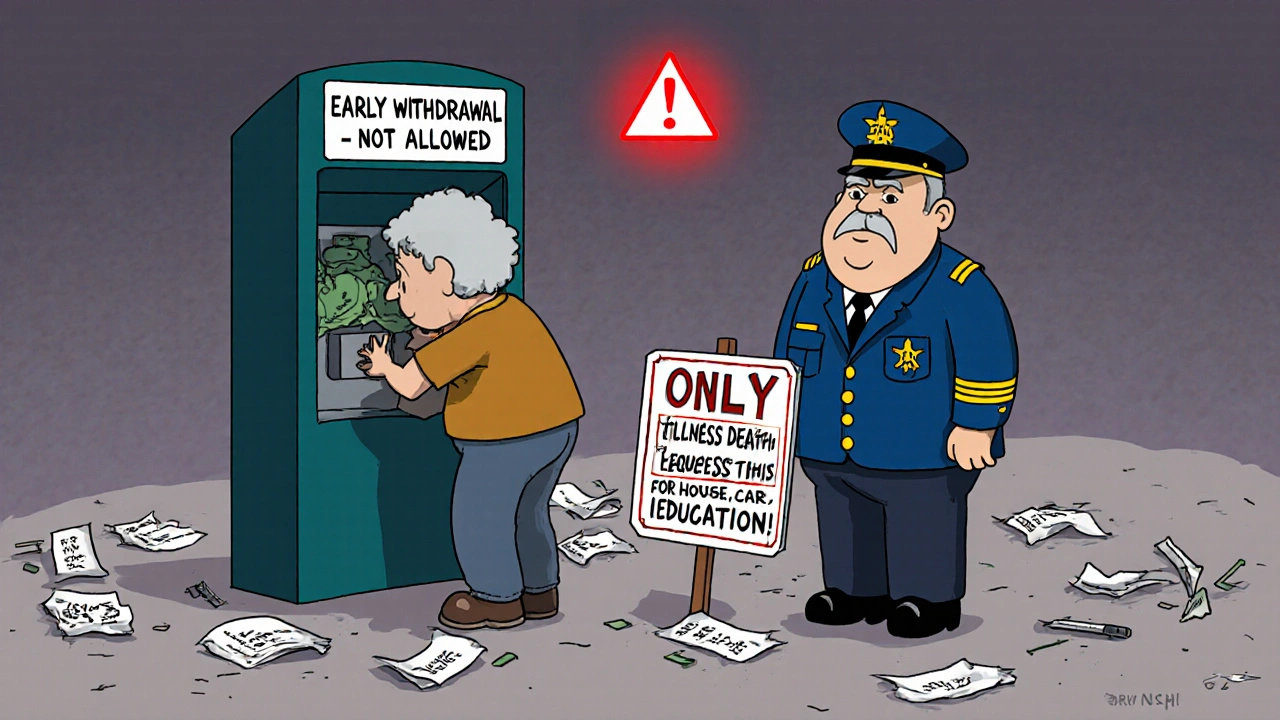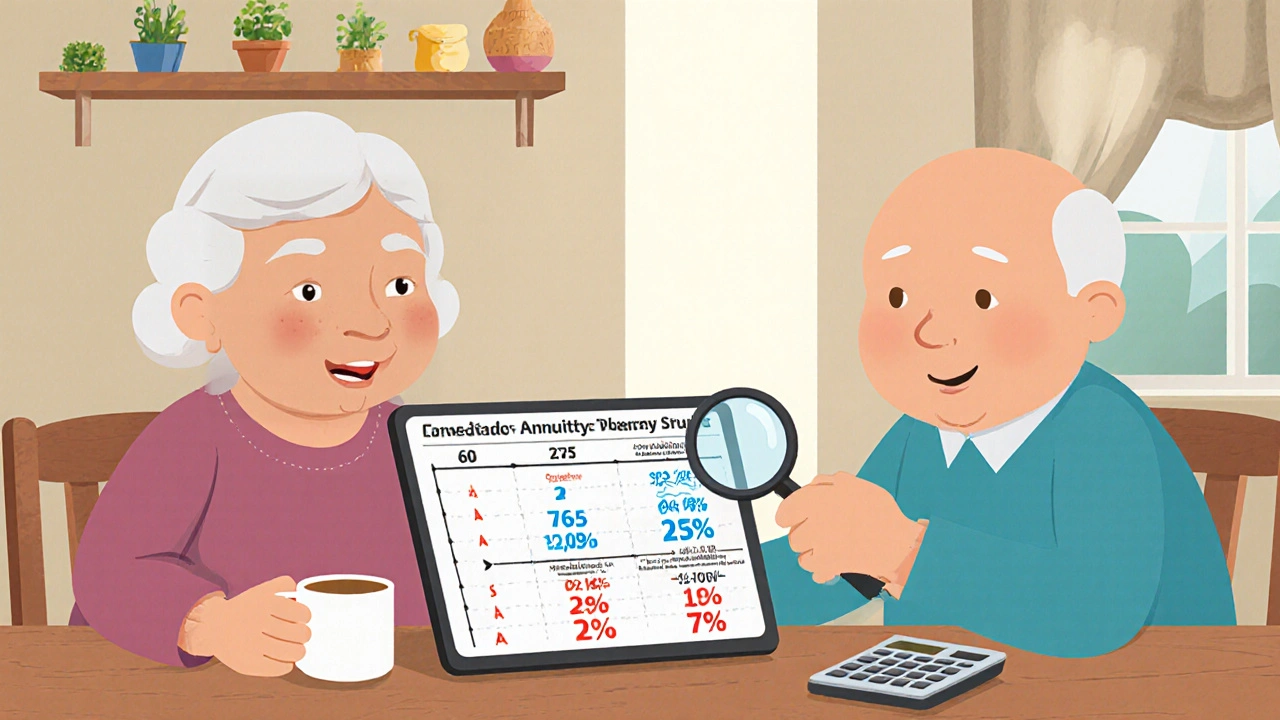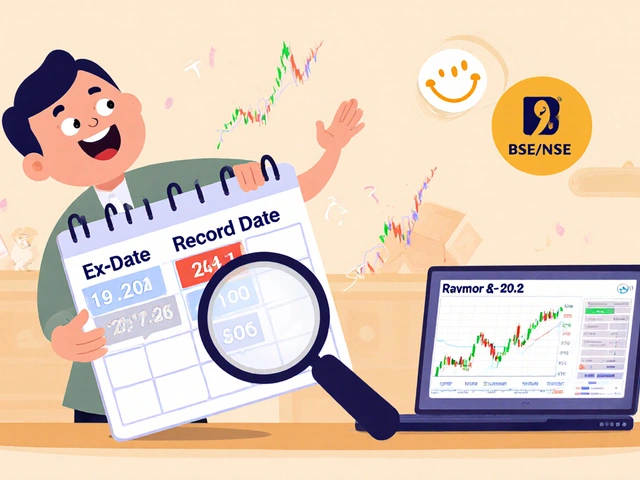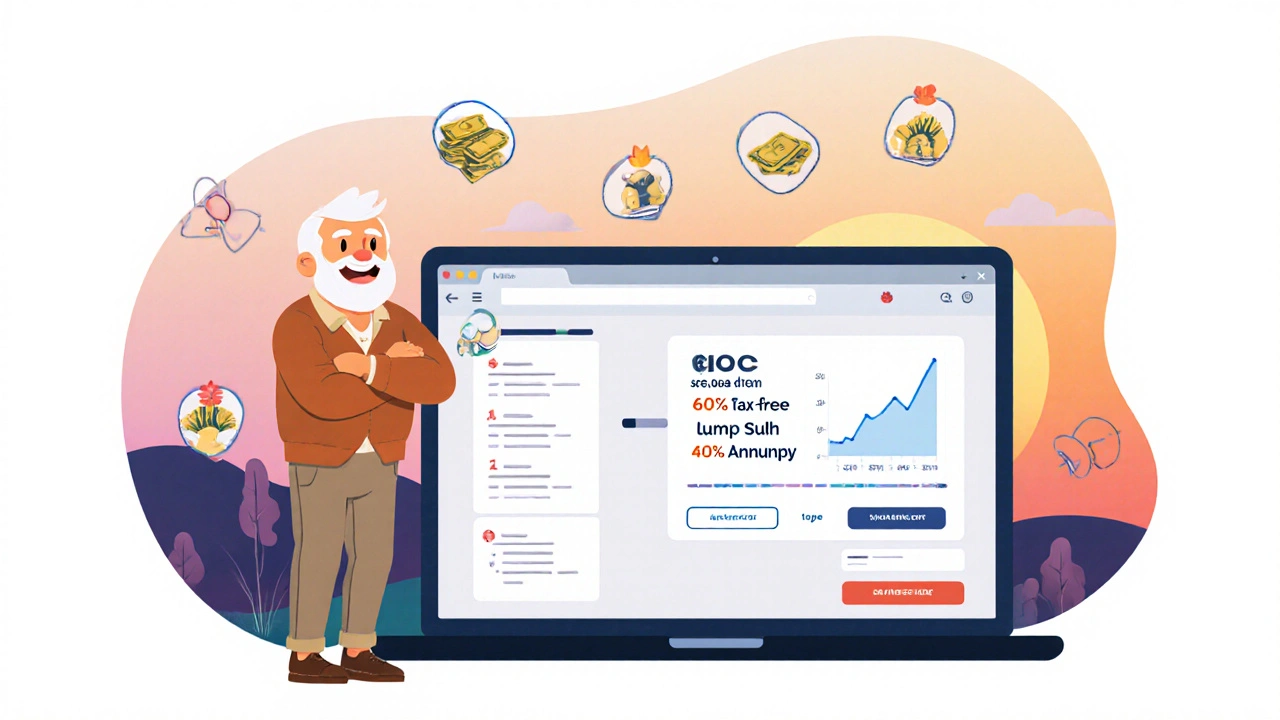NPS Withdrawal Rules in India: When and How You Can Access Retirement Funds
By the time you hit 60 in India, your NPS account might have grown into a significant sum. But knowing NPS withdrawal rules isn’t just about accessing your money-it’s about avoiding penalties, taxes, and costly mistakes. Many people think once they retire, they can take out everything at once. That’s not true. The rules are strict, and the consequences of getting them wrong can cost you thousands.
What Is NPS and Why Does Withdrawal Matter?
The National Pension System (NPS) is India’s government-backed retirement plan. It’s mandatory for central government employees and optional for everyone else. You contribute monthly, and your money gets invested in a mix of equity, corporate bonds, and government securities. The goal? Build a steady income stream after you stop working.
But NPS isn’t a savings account. You can’t just log in and withdraw whenever you want. There are specific triggers: age, disability, death, or extreme financial hardship. And even then, the government controls how much you can take out and how you must use it.
If you’re planning to retire soon-or you’re already retired-understanding these rules isn’t optional. It’s the difference between having financial security and scrambling for cash.
When Can You Withdraw from NPS?
You can’t touch your NPS funds until you hit 60. That’s the standard retirement age under the scheme. But there are exceptions:
- Age 60: This is your main exit point. At 60, you must use at least 40% of your corpus to buy an annuity (a regular pension). The remaining 60% is tax-free and can be withdrawn as a lump sum.
- Age 61 to 70: If you delay retirement past 60, you can keep contributing and let your corpus grow. You still must buy an annuity with 40% of your savings when you finally exit.
- Before 60 (early withdrawal): Only allowed in rare cases-critical illness, death of the subscriber, or higher education for children. You can withdraw up to 25% of your contributions (not the total corpus) for these reasons.
- Death: If you pass away before 60, your nominee gets the entire corpus without any annuity requirement.
There’s no provision for withdrawing funds for a house, car, or medical bills unless it’s a listed emergency. Don’t assume flexibility-NPS is designed to be locked in until retirement.
How Much Can You Withdraw?
At age 60, the withdrawal split is fixed:
- 40% mandatory annuity: You must use this portion to buy a lifetime pension from an IRDAI-approved insurer. You can choose between fixed, increasing, or joint-life annuities.
- 60% lump sum: This part is fully tax-free. You can take it as a single payment or spread it over a few months. No TDS is deducted.
Let’s say your NPS account has ₹50 lakh at age 60. You must use ₹20 lakh to buy an annuity. The remaining ₹30 lakh goes to you, tax-free. If you live longer than expected, your annuity keeps paying. If you pass away early, your nominee gets the remaining annuity payments-or a lump sum, depending on the annuity type.
For partial withdrawals before 60, you can only take up to 25% of your own contributions (not including government contributions or returns). You’re allowed three such withdrawals during your entire NPS tenure. Each one must be for an approved reason, and you need to wait at least five years between them.

How to Withdraw from NPS: Step-by-Step
The process is digital, but it’s easy to mess up if you skip steps. Here’s how to do it right:
- Log in to your NPS account: Go to the NSDL or KFintech portal (depending on your CRA) using your PRAN and password.
- Submit a withdrawal request: Select ‘Withdrawal’ and choose the reason-retirement, premature exit, etc.
- Choose your annuity provider: You’ll be shown a list of approved insurers. Compare their payout rates and terms. Some offer 7-8% annual returns, others less. Don’t pick the first one.
- Confirm the lump sum amount: The system auto-calculates 60% of your corpus. You can’t change this percentage.
- Upload documents: ID proof, bank details, and proof of age (if needed). For early withdrawal, you’ll need medical certificates or admission letters.
- Submit and wait: Processing takes 10-15 working days. The lump sum hits your account directly. The annuity starts within 30 days.
Many people forget to choose an annuity provider. If you don’t, the system picks one for you-and it might not be the best deal.
Taxes on NPS Withdrawal: What You Actually Pay
Here’s the good news: the 60% lump sum is completely tax-free. That’s a rare benefit in India’s tax system.
The annuity payments you receive monthly are taxable as income. They’re added to your other income and taxed at your slab rate. So if you’re drawing ₹20,000/month from your annuity and have no other income, you’ll likely pay little or no tax. But if you have rental income or a part-time job, your annuity could push you into a higher tax bracket.
For early withdrawals (before 60), the amount you take out is added to your income and taxed. There’s no tax exemption. That’s why using NPS for emergencies isn’t ideal unless you have no other option.
Common Mistakes People Make
Most people don’t realize how rigid NPS rules are until they try to withdraw. Here are the top errors:
- Assuming you can withdraw 100%: No. 40% is locked into an annuity. No exceptions.
- Delaying annuity selection: If you don’t pick one, your money sits idle. You lose potential returns.
- Choosing the cheapest annuity: Low premium doesn’t mean high payout. Compare lifetime payout rates, not just upfront costs.
- Ignoring tax implications: Annuity income is taxable. Plan your budget around it.
- Trying to withdraw for non-approved reasons: No home purchase, no business funding, no vacations. Don’t waste your time applying.
One client I worked with tried to withdraw ₹15 lakh at age 58 to pay for his daughter’s medical treatment. He didn’t qualify-he had no medical certificate from a recognized hospital. His application was rejected. He ended up taking a personal loan at 14% interest.

What Happens If You Don’t Withdraw?
If you don’t initiate withdrawal after turning 60, your account stays active. You can keep investing, and your money keeps growing. But you can’t make new contributions after 70. You also can’t leave the money untouched forever-by age 75, you must withdraw or annuitize.
Leaving funds in NPS past 60 can be smart if you’re still working or want to delay taking income. But don’t assume the system will remind you. You have to act.
Alternatives to NPS Withdrawal
If you need cash before 60 and don’t qualify for partial withdrawal, consider these options:
- PPF: You can withdraw after 5 years, with partial withdrawals allowed from the 7th year.
- ELSS mutual funds: These have a 3-year lock-in, then full access.
- Fixed deposits or liquid funds: Better for short-term needs.
- Home equity loans: If you own property, this can be a lower-cost option than NPS early withdrawal.
NPS is designed for long-term retirement. Don’t treat it like a backup fund.
Final Checklist Before You Withdraw
Before you hit submit on your withdrawal request, run through this:
- Are you 60 or older? (Or do you qualify for early withdrawal?)
- Have you compared at least 3 annuity providers?
- Do you have your bank account and ID documents ready?
- Have you calculated how much monthly income the annuity will give you?
- Have you factored in taxes on annuity payments?
- Have you considered what happens if you outlive your annuity?
If you answered yes to all, you’re ready. If not, pause. Getting this wrong can cost you more than just money-it can cost you peace of mind.
Can I withdraw my NPS amount before 60?
Yes, but only under specific conditions: critical illness, death of a family member, higher education for children, or buying a house. You can withdraw up to 25% of your own contributions, and only three times during your lifetime. You must provide proof, and the withdrawal is taxable.
Is the NPS lump sum withdrawal tax-free?
Yes. The 60% lump sum you receive at age 60 is completely tax-free under Section 10(12B) of the Income Tax Act. No TDS is deducted. This is one of the biggest advantages of NPS over other retirement schemes.
What happens if I don’t buy an annuity?
You must buy an annuity with 40% of your corpus. If you don’t choose one, the system will assign you one automatically, usually from the lowest-cost provider. You won’t get your 40% as cash-it will be locked into an annuity contract. You can’t skip this step.
Can I withdraw NPS funds in installments after 60?
No. The 60% lump sum must be taken as a single payment. You can’t split it into monthly withdrawals. The only way to get regular income is through the annuity you buy with the 40% portion.
Can I continue contributing to NPS after 60?
Yes. You can keep contributing until age 70 if you’re still working or want to grow your corpus. But you must start withdrawing (or annuitizing) by age 75. After 70, you can’t make new contributions, but your existing balance keeps earning returns.
Is NPS better than PPF for retirement?
NPS offers higher potential returns because of its equity exposure, but it comes with market risk. PPF is safer with fixed returns (currently around 7.1%), but lower growth. NPS gives you a tax-free lump sum; PPF gives you tax-free maturity amount. NPS requires an annuity; PPF doesn’t. Choose NPS if you’re comfortable with risk and want higher growth. Choose PPF if you want guaranteed, predictable returns.





